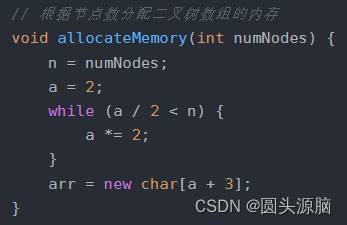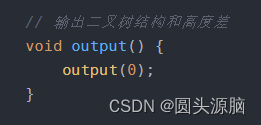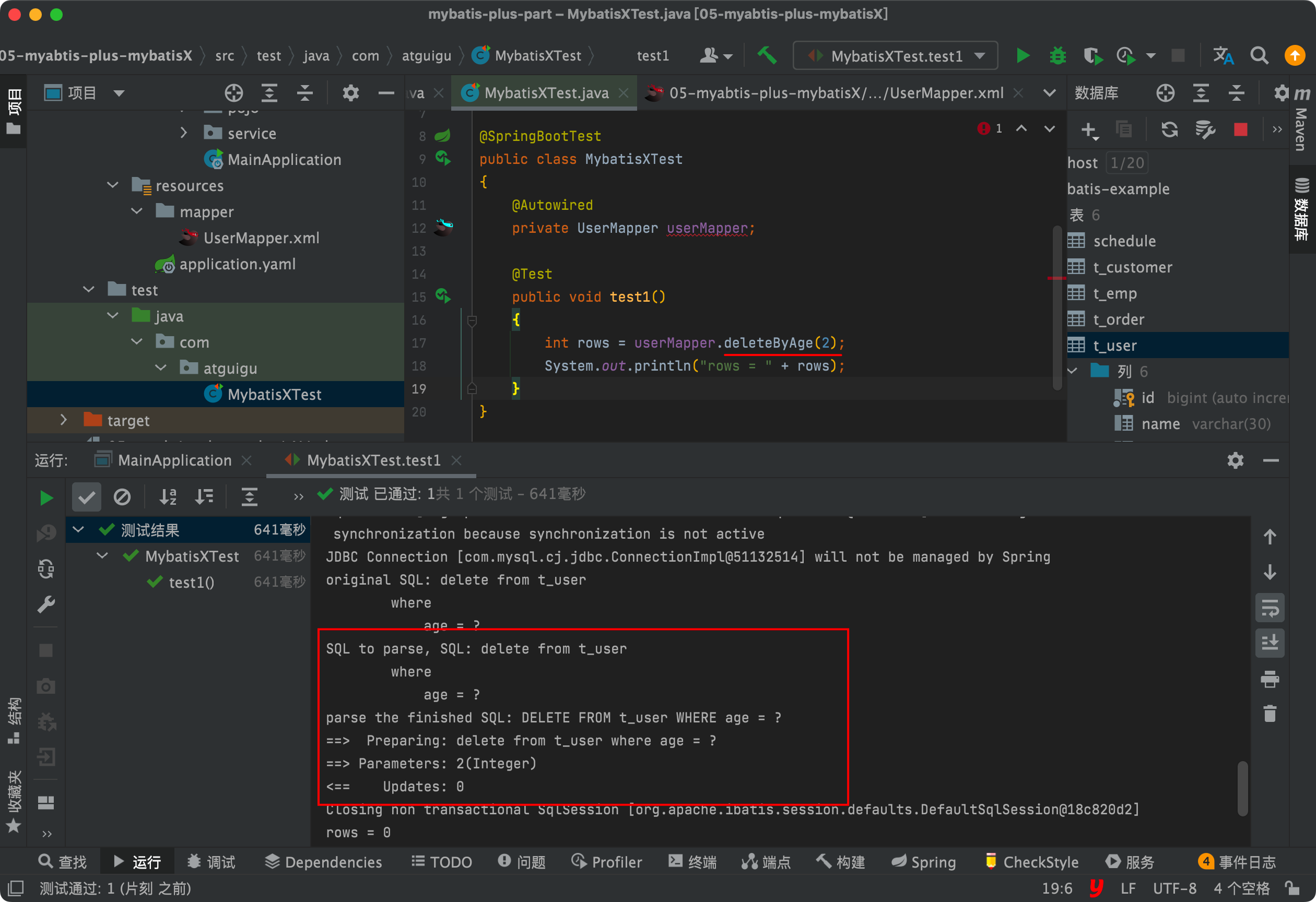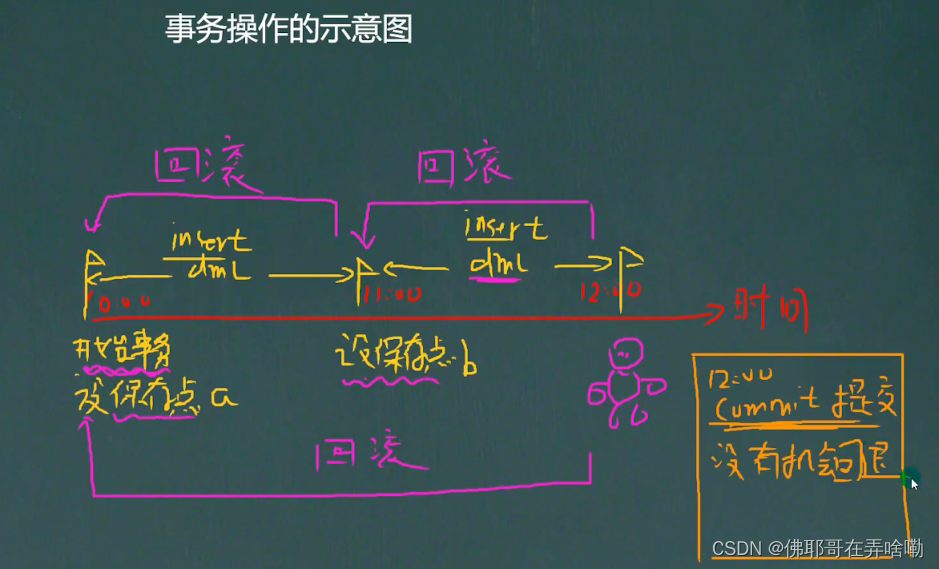Description
二叉树用数组存储,将二叉树的结点数据依次自上而下,自左至右存储到数组中,一般二叉树与完全二叉树对比,比完全二叉树缺少的结点在数组中用0来表示。
计算二叉树每个结点的平衡因子,并按后序遍历的顺序输出结点的平衡因子。
–程序要求–
若使用C++只能include一个头文件iostream;若使用C语言只能include一个头文件stdio.h
程序中若include多过一个头文件,不看代码,作0分处理
不允许使用第三方对象或函数实现本题的要求
Input
测试次数t
每组测试数据一行,数组元素个数n,后跟n个字符,二叉树的数组存储。
Output
对每组测试数据,按后序遍历的顺序输出树中结点的平衡因子(测试数据没有空树)

思路:
首先先要理解平衡因子的概念http://t.csdnimg.cn/RErze,推荐文章,有图文讲解很详细。
简单来说就是 平衡因子 = 左子树深度 - 右子树深度(当前节点)。
分配内存这里是把它补成满二叉树,然后就可以对数组直接进行操作


因为二叉树的结点数据依次自上而下,自左至右存储到数组中,可以在数组中直接操作
arr[0] 的左孩子是 arr[1*2 + 1] 右孩子是 arr[1*2 + 2];
arr[n] 的左孩子:arr[2*n + 1] 右孩子:arr[2*n + 2];

output函数进行递归并且输出结果。

主函数调用output();在类的public里面,传入参数0,数组的第0位,即二叉树的根节点。
左子树高度减去右子树高度即为输出结果。
AC代码:
#include <iostream>
using namespace std;
// 二叉树类定义
class BinaryTree {
public:
char* arr; // 数组用于存储二叉树节点
int n; // 二叉树节点数
int a; // 数组大小,以容纳二叉树节点
// 构造函数,用于初始化具有给定节点数的二叉树
BinaryTree(int numNodes) {
allocateMemory(numNodes);
}
// 析构函数,释放动态分配的内存
~BinaryTree() {
delete[] arr;
}
// 初始化二叉树,将叶节点的值设置为 '0'
void init() {
for (int i = n; i < a; i++) {
arr[i] = '0';
}
}
// 输出二叉树结构和高度差
void output() {
output(0);
}
// 根据节点数分配二叉树数组的内存
void allocateMemory(int numNodes) {
n = numNodes;
a = 2;
while (a / 2 < n) {
a *= 2;
}
arr = new char[a + 3];
}
// 计算指定节点的高度
int height(int node) {
if (arr[node] == '0') return 0;
return height(node * 2 + 1) > height(node * 2 + 2) ? height(node * 2 + 1) + 1 : height(node * 2 + 2) + 1;
}
// 递归输出二叉树结构和高度差
void output(int node) {
if (arr[node] == '0') return;
output(node * 2 + 1);
output(node * 2 + 2);
cout << arr[node] << " " << height(node * 2 + 1) - height(node * 2 + 2) << endl;
}
};
int main() {
int t;
cin >> t;
while (t--) {
int n;
cin >> n;
BinaryTree p(n);
for (int i = 0; i < n; i++) {
cin >> p.arr[i];
}
p.init();
p.output();
}
return 0;
}



















